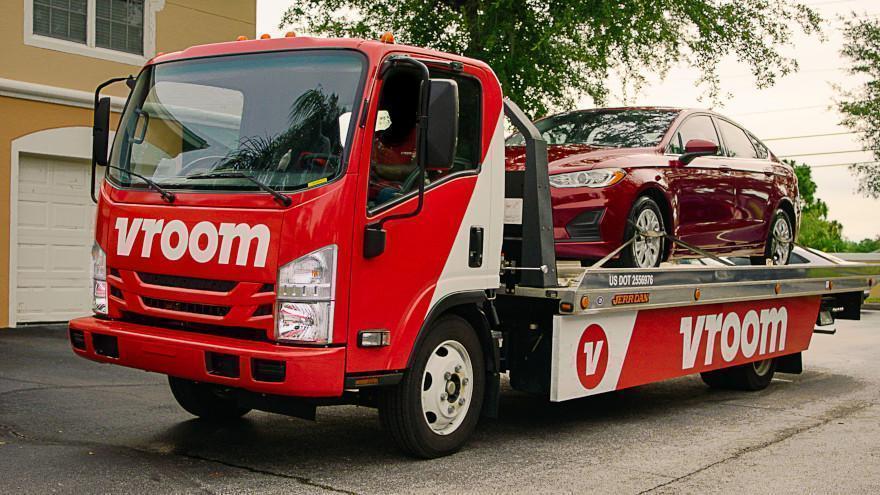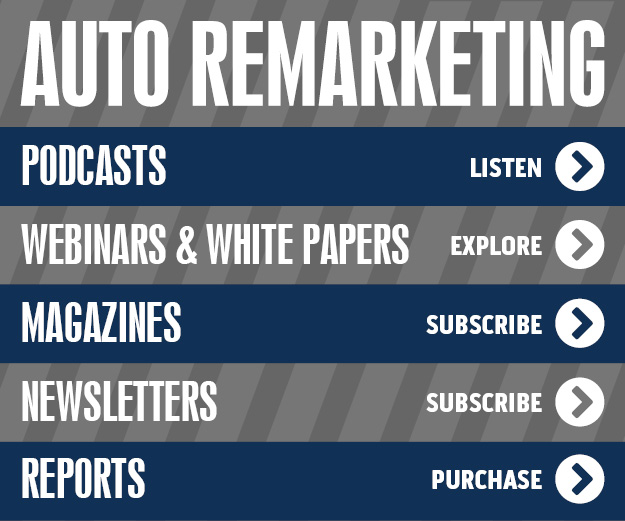Vroom realigns its business model, reduces employee head count & appoints new CEO

Photo courtesy of Vroom.
Vroom Inc. is realigning its business model to prioritize profitability over growth, reduce operational expenses and maximize liquidity, the company’s new chief executive Tom Shortt said during its first quarter conference call on Tuesday.
The realignment also calls for company to reduce its employee head count by 270 or approximately 14%, said Bob Krakowiak, Vroom’s chief financial officer, who was also on the call.
Vroom announced the day before the Q1 earnings call that Paul Hennessey, as its former CEO, had left the company. Shortt is the company’s former chief operating officer.
“As we focus on these three objectives, we will scale back the business while we focus on improving (gross profit per unit), improving our operating processes, reducing operating costs and dramatically improving our customer experience,” Shortt said during the call.
He also said the company will leverage its national brand and focus on regional operations which in turn, will reduce operation costs and allow the company to provide faster delivery times to its customers.
Bob Mylod, the company’s independent executive chairman, said many of the company’s financial and operational challenges revolve around its difficulties processing titles and registrations of vehicles it buys from and sells to customers.
The problem put a strain on the company’s relationships with some customers who bought vehicles they could not register prior to their temporary plates expiring, and with various state departments of motor vehicles which handle vehicle title and registrations, Mylod said during the call.
'We fell behind'
“In the past several months with hyper growth putting more and more strain on this important operational motion and recent developments in the way our partners handle this paperwork, we fell behind,” he said.
The situation also wreaked financial havoc on the company. It lowered inventory turns, increased the likelihood of markdowns and increased customer returns and make good payments, Mylod said. The company also incurred legal expenses as it result of the problems.
“From a balance sheet perspective, it has resulted at times over the last few months, in our cash being inefficiently used to finance too much inventory, too many receivables and too much restricted cash,” Mylod said.
“All of this activity has added up to losses that are too high and negative cash flows that are in excess of those losses.”
Mylod vowed that Vroom would “slow down until we get this right.” The company also said it would incorporate technology to improve its titling and registration process and projects fewer ecommerce unit sales.
For the full year, Vroom expects to sell about 45,000 to 55,000 ecommerce units, which is lower than its first quarter level of 19,473 ecommerce units, but representing a 25.6% year-over-year increase.
“This represents a reduction from first quarter levels as we prioritize unit economics over growth,” CFO Krakowiak said. “We are expecting remaining units for the year to be spread fairly evenly by quarter with some modest seasonal variance.”
Growing captive finance business
One key to the company’s future success is its acquisition of United Auto Credit Corp., in the first quarter, Mylod said.
“It is of enormous strategic importance to Vroom, as it will ultimately allow us to earn the full economics associated with car loans on a very substantial percentage of our transactions,” Mylod said.
“This is the type of assets that our bigger competitors Carvana and CarMax have benefitted from for years. We now have that arrow in our quiver, too, and it will make Vroom a better, more profitable company.”
In the quarter, Vroom’s total revenue rose 56.3% to $923.7 million when compared to the same period last year.
It’s total gross profit rose 125.7% to $81.6 million in the same time frame, but its net losses plunged 302.2% to $310.4 million.
How Q1 fared for Shift
Over at Shift Technologies, the Vroom and Carvana rival saw its ecommerce sales grow 51% year-over-year in its first quarter that ended March 31. The company is also pausing its expansion into Las Vegas, said its CEO George Arison, during the company’s earnings call on Tuesday.
The company is also is adding to its inventory more vehicles 8-years and older and whose odometer exceeds 100,000 miles — unit that it calls value cars.
To meet consumer demand, value cars will soon make up 35% to 40% of Shift’s inventory, up from about 30% in early May, he said.
Arison doesn’t expect value cars to create reconditioning challenges for the company, but does expect it to be a drag on F&I because buyers tend to buy fewer service contracts for these vehicles.
Noting that value cars sell quickly, “we view it as a worthwhile trade-off given the high front-end margin we typically see on value vehicles,” he said.
Las Vegas: non-essential
Shift believes there are a lot of opportunities to grow its market share footprint in Texas and does not see expanding into Las Vegas as essential to meeting it 2022 goals.
Shift’s unit sales grew 51% in the first quarter when compared to the same quarter last year with its West Coast market accounting for 70% of the growth and its newer Texas markets accounting for the other 30%.
“While we still think (Las Vegas) will be an attractive market over the long term, we found the regulatory environment to be more challenging than anticipated,” Arison said.
Shift also trimmed its corporate staff by about 10% in April.
That initiative, coupled with the hiring of logistics and reconditioning staff in the last quarter of 2021, has given Shift confidence that it is adequately staffed to meet customer demand while maintaining a cost effective and lean organization, the company said.
Shift’s total revenues in the quarter was up 107.1% to $219.5; its total gross profit grew by 46.5% to $10,788 and its ecommerce gross profit per unit dropped 54.4% to $330.
It registered a net loss in the quarter of $57.0 million compared to a net loss of $42.7 million in the year ago quarter.


